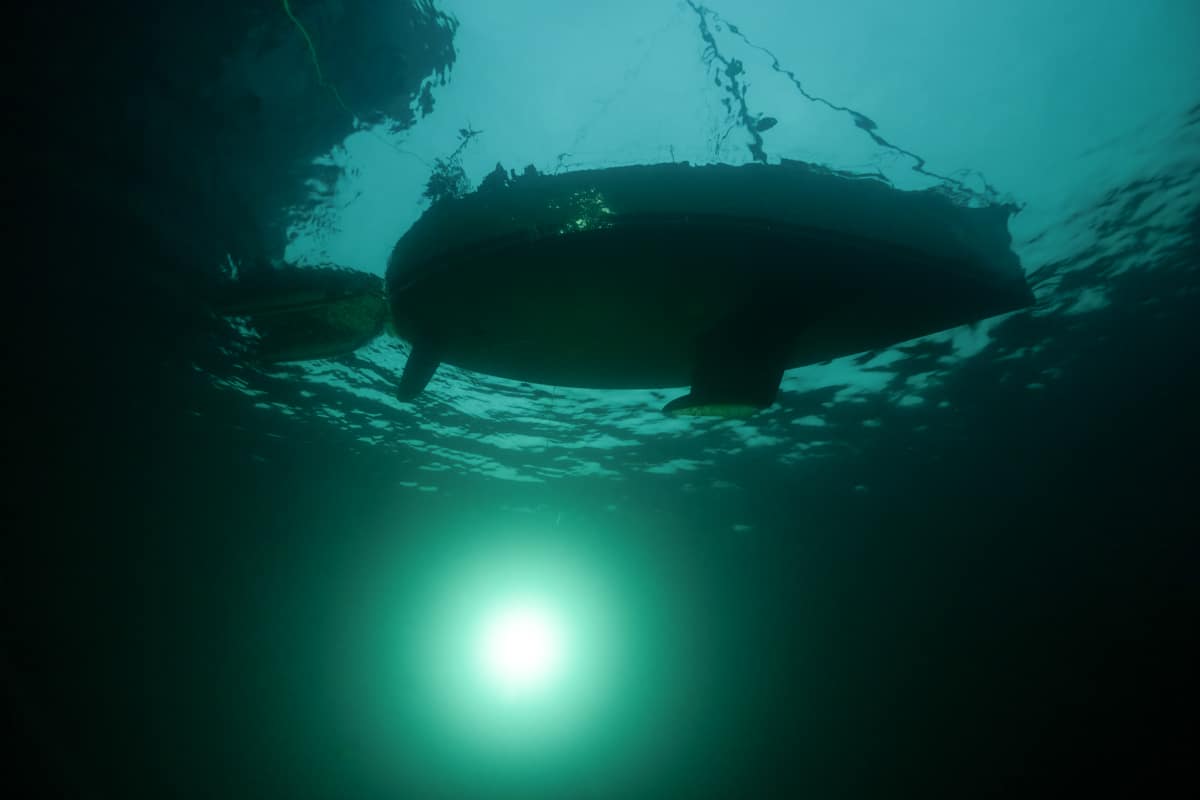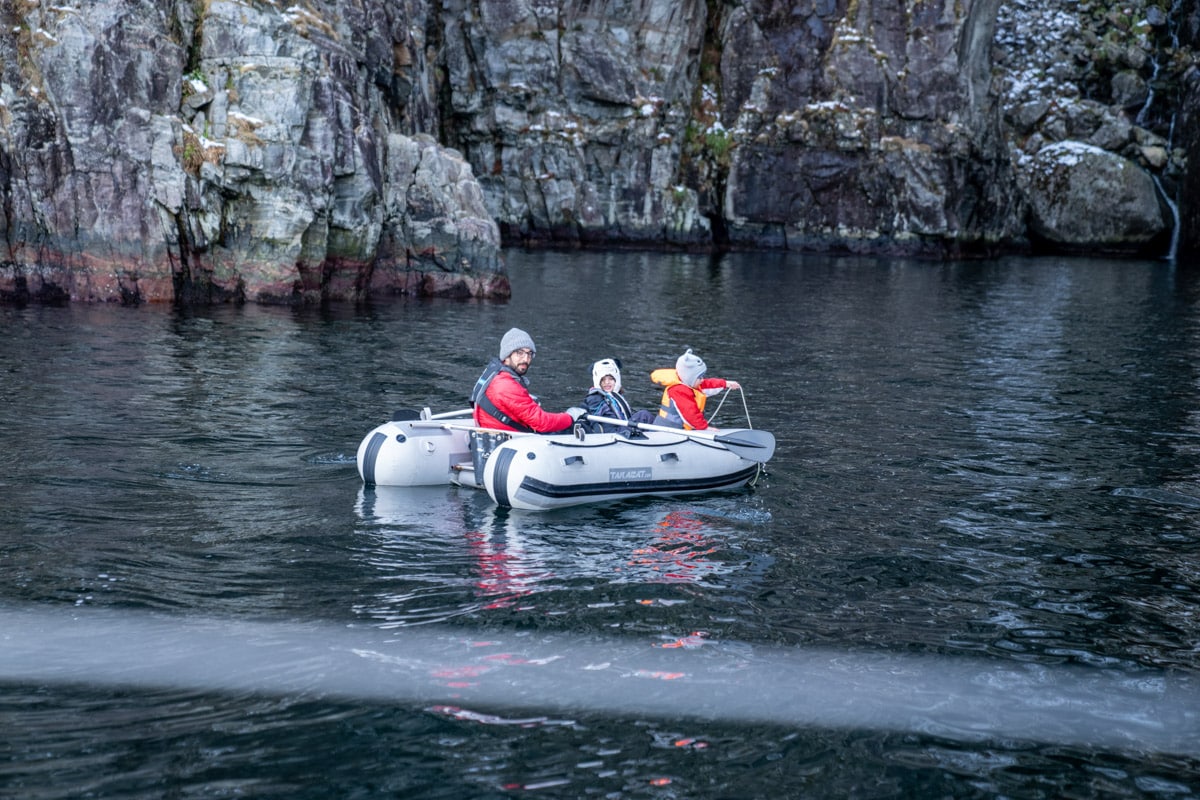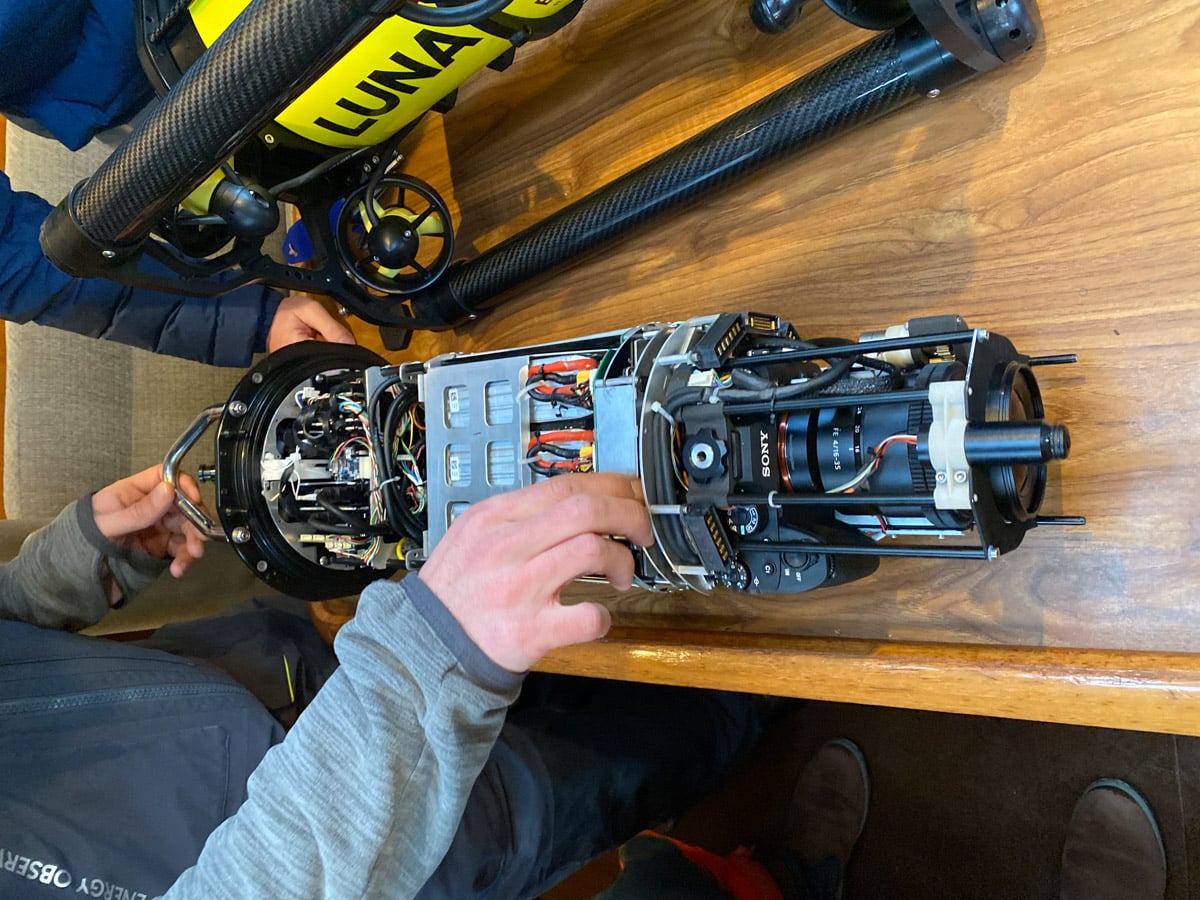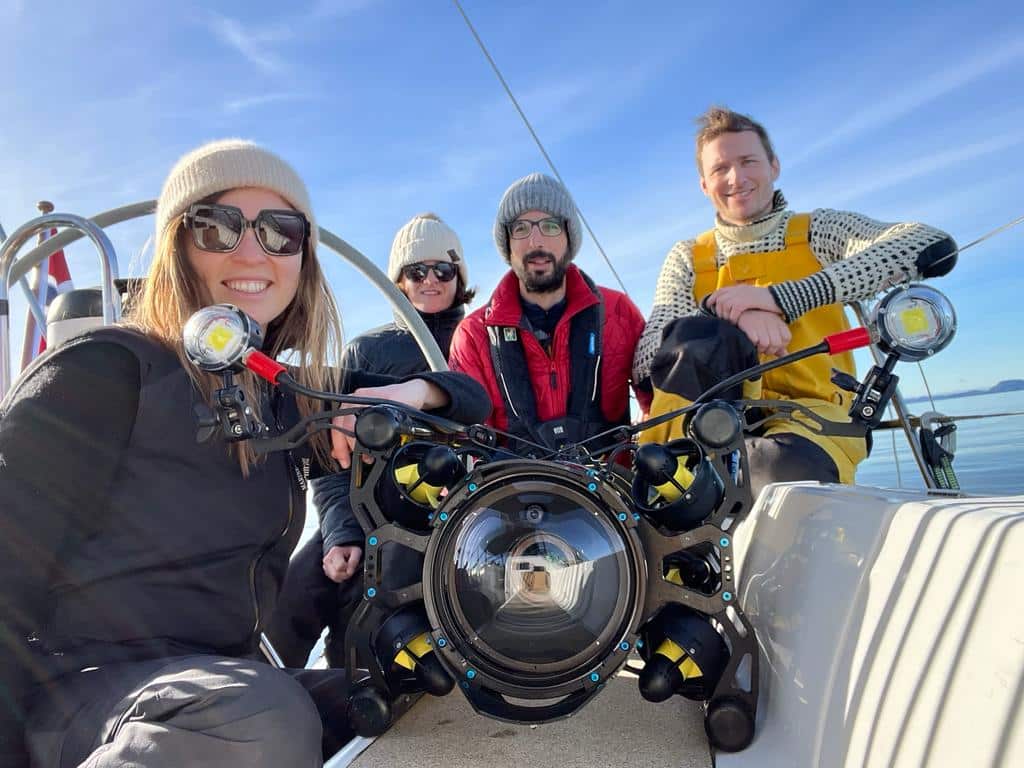Fabrice Schnoller, known from many Barba adventures by now, reached out to me telling me he had met a guy with an ROV that he thought I should meet. An ROV (remotely operated vehicle) is an underwater submarine. I was anything but interested. The ROVs I had tried in the past were slow and rather boring. For most of the work we do, filming whales that is, we need the speed and agility of a diver with a scooter.
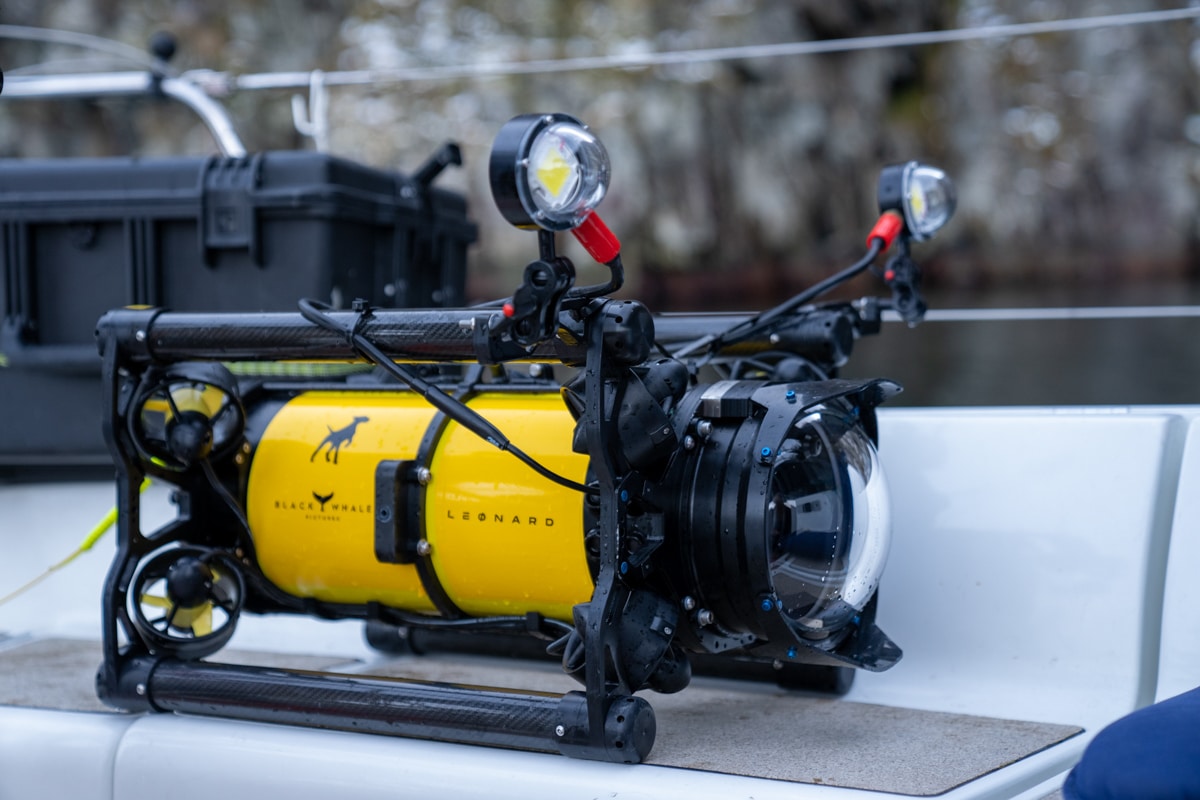
Then Fabrice showed me some of the ROV footage. I was mind-blown. How soon can I meet this guy? Two weeks later, Antoine Drancey and Fabrice showed up at the Barba HQ, my flat in Stavanger. Antoine brought with him the ROV, Leonard. It was love at first sight. The ROV was a super high-tech gadget, which promised to push the boundaries for underwater exploration from a small platform such as Barba.
Antoine was also a very amicable guy. Based out of Brittany, France, he used to run his own fashion photography agency with his wife, until they sold the company. They subsequently went all-in on the Leonard ROV and Black Whale project.

Leonard is a one-of-a-kind unit, and also it’s on the pricey end. Worth more than the sailing vessel Barba itself. I replaced the word sailing boat with ROV, in one of my favorite quotes. “The best thing is to have a friend with a ROV (sailing vessel)” (as in avoid owning one yourself, due to all the expenses and maintenance work..).
We sailed into the scenic Lysefjord to test the device in sheltered waters. I was well familiar with the upper 30 meters. But what was there to be found in the deep? During a dive that lasted a couple of hours, we found out. At 270 meters, we reached a shelf and concluded that this was deep enough for a first test dive. As for the visuals, there was the occasional shrimp, some clams, and jellyfish.

In February, Antoine came back to Barba HQ for a new follow-up session. This time he brought with him the entire Black Whale team. His wife Florence, their two children aged 3 and 6, as well as their friend Amadea Kostrzewa. Amadea used to work for the same Energy Observer project and now was busy planning the Paris Olympics. A motley crew, as it should be on Barba. The icing on the cake was a big bag filled with French cheese!
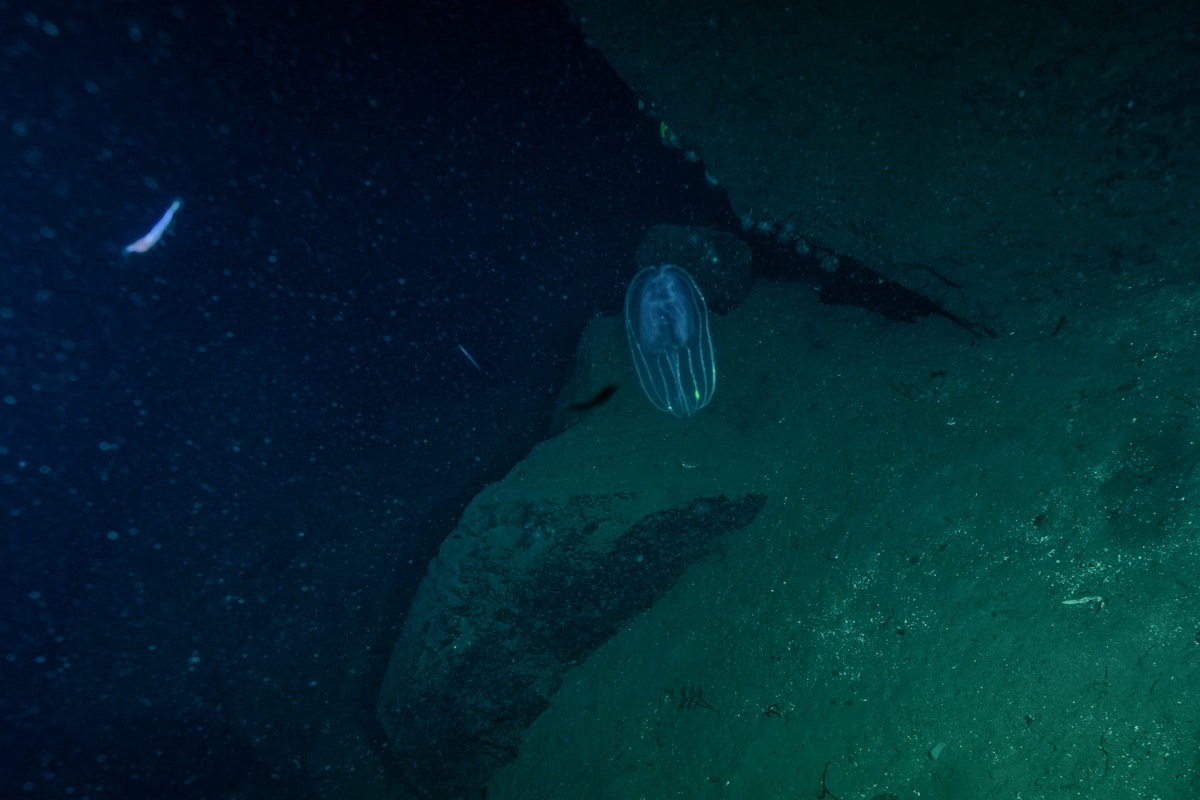
Meanwhile, I had been pondering how to make better use of the ROV. I had located a promising fjord as far as marine life goes, the 664-meter deep Jøsenfjord. Additionally, I sourced 25 kg of discarded fish that we would use as bait to try to attract the Greenlandic shark that lives in the depth of the fjords. Individuals weighing around one ton have been caught in the region. We knew the chances would be small, but who cares. Even a tiny bit of hope of observing this shark in its natural environment makes it totally worth it.
Once in Jøsenfjorden, we crushed the fish on some rocks and put them in a mesh bag. We moored the boat in a crack in the fjord, with a 200-meter plateau just next to us for deploying the bait. It all went to plan, except for the underwater plateau that just wasn’t there. The seafloor maps were not accurate at this depth. And fair enough. We see why this is not a priority for the Norwegian mapping authorities.

Having waited a few hours, we dove with the ROV. The bait was suspended vertically at 200 meters. We continued the dive until 350 meters, never reaching the seafloor. It probably would have been better to reach the seafloor as far as marine critters go. Regardless, the Jøsenfjord was teeming with life. We saw shrimps, small sharks, and a number of deep-water fish. The only thing missing was the Greenlandic shark, but it gives us an excuse to try again.

The ROV is well-suited for exploring deep waters where it would be too dangerous or impractical for divers to venture. It also allows for long-duration dives, which is outstanding for scientific and filming purposes.
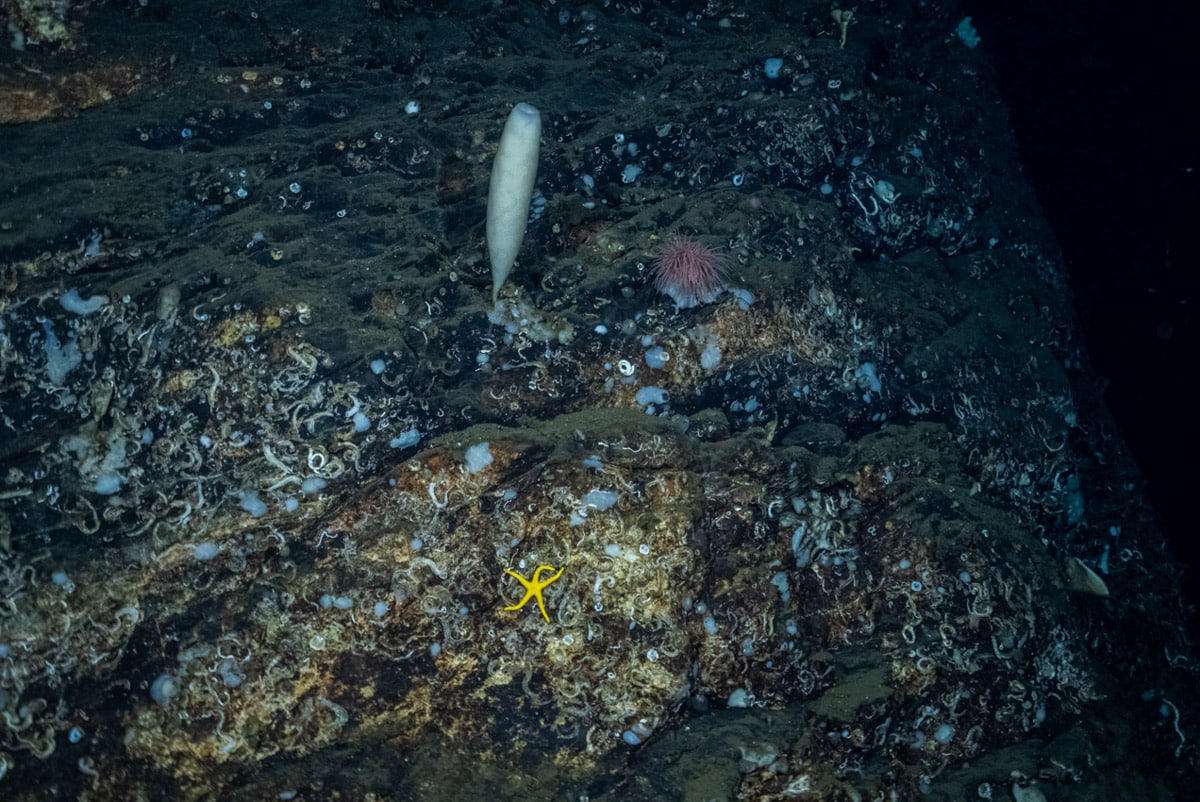
In addition to being great fun, as well as feeding an indefatigable ocean curiosity, the visits from the Black Whale team serve a greater purpose. We get to test the gear in a controlled environment and increase our understanding of how to put it to the best use. In addition, there is the social aspect, and the crew gets to understand the inner workings of Barba.
As for the next steps, Amadea will come to Stavanger for the sail up the Norwegian coast to Tromsø commencing June 1st. Antoine and Leonard (the ROV) will meet us in Longyearbyen, Svalbard, home of polar bears, walruses, and Greenlandic sharks in July.
Together we will be exploring the depths of the Arctic water, most certainly coming across creatures and features never before seen.
As always, exciting times ahead!
Andreas
All footage by Antoine Drancey.
Video edit by Florence & Antoine Drancey.
Highlight video from the ROV Leonard.
For additional information, see:
Finally, 1 hour and 18 minutes of unprocessed ROV footage, for the curious cats and ocean nerds. Some rather interesting content there if you ask me (as an ocean nerd that is).
